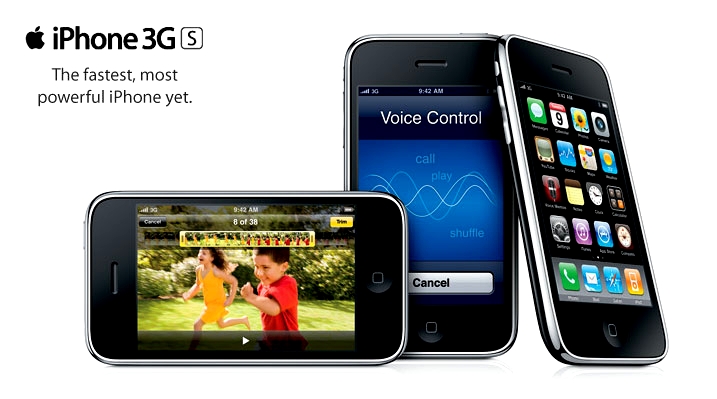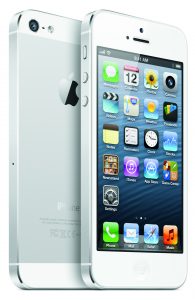10 years ago today the iPhone went on sale and changed everything -- so why didn't I want one?

On January 9, 2007, Steve Jobs introduced the iPhone at the Macworld Conference and Expo in San Francisco. It was the usual quality presentation from Apple’s sorely missed boss, with some great moments of humor. Our first glimpse of the phone was in fact actually a mock-up of an iPod with a rotary dial in place of the usual click wheel. The audience clapped and hooted. Jobs then went on to show the real device, and it was pretty mind-blowing.
Here was a phone that looked nothing like a phone. It looked nothing like an iPod, for that matter either. It was pretty much all screen, controlled by touch using your finger -- or fingers, thanks to the power of multi-touch -- and was, according to Jobs, powered by OS X. The device could tell if you were holding it portrait or landscape, and knew when you were holding it up to your ear, and so prevent you prematurely ending a call with the side of your face. It came with a 620MHz processor, 128MB of memory and a 2MP camera. It was a magical device. This was the future, being shown right here. A device to be coveted by all. But I didn’t want one.
SEE ALSO: This is what people thought about the first iPhone
Perhaps it was because I had a regular dumb Nokia mobile, without a built-in QWERTY keyboard or any great bells and whistles, that I just couldn’t really see the benefit. I was happy enough using predictive text to send lightning fast SMS messages. The idea of a virtual touchscreen keyboard just didn’t appeal. Mind you, at that point my experience of touchscreens was mostly limited to Personal Information Managers controlled with a stylus, and kiosk computers with unresponsive screens, that often did nothing when touched, or moved an on-screen cursor to somewhere only vaguely near where you were frustratingly prodding.
The first iPhone went on sale in the USA on June 29, 2007 -- ten years ago today. Exclusively on AT&T it was initially available in 4GB and 8GB models for $499 and $599 respectively. Would-be purchasers queued right around the block outside the Apple stores. I wasn’t one of them. Partly because I wasn’t interested, and partly because I live in the United Kingdom and the iPhone didn’t come out here until four months later, by which time the 4GB model had been discontinued stateside and the price of the 8GB model cut by a third to $399.
Out of curiosity, and because I was in the market for a new phone, I went into an Apple store in December 2007, and tried out the iPhone for myself. It was light, thin, and surprisingly responsive. I played with it some more and liked it. This was a great piece of kit. A quality phone, crossed with an iPod, that I could use to browse the web comfortably. I remember holding the iPhone in my hand, and being really, really impressed.
So impressed, a few hours later I went home the proud new owner of a BlackBerry 8800.
Next Generation
In February 2008, the 16GB iPhone was announced and four months later Jobs introduced us to the iPhone 3G. This was the iPhone for the 3G network and came with GPS. Available in 8GB and 16GB models, it was thinner, and ran iOS 2.0. Most excitingly of all, users could now download or buy third-party apps from developers like Google through the new App Store. I liked what I saw. I liked it a lot. But I liked my CrackBerry more.
The iPhone 3GS was released on June 19, 2009. This new model came in 8GB, 16GB and 32GB flavors, was faster, thanks to an 833MHz ARM Cortex-A8 processor and 256MB of memory, and had a much better 3MP camera that, unlike its predecessors, could record video (VGA). It offered voice control too.
I wavered, but still preferred my phone. We were in it for the long haul and I couldn’t imagine being without it.
Then the BlackBerry’s charging port broke.
So I finally relented and purchased an all new, shiny iPhone 3GS, and fell instantly and deeply in love with it.

My love affair with the 3GS didn’t last very long though. The iPhone 4 was released on June 24, 2010, bringing with it the Retina Display, a super-speedy 1Ghz Apple A4 processor (making it twice as fast as my new phone, and four times as fast as the original model) and 512MB of memory. It was slimmer, had a glass body, and a new and improved 5MP camera capable of recording 720p HD video. It had a front camera too, so users could FaceTime (Apple lingo for video chatting). It also had a new feature called "Death Grip", which caused calls to drop when you held the phone in a certain way. But Jobs had me at "Retina Display" so I upgraded immediately.
SEE ALSO: The original iPhone was considered a high-end feature phone, not a smartphone
Getting Siri-ous
On October 4, 2011, with everyone hoping for the iPhone 5, the 4S was announced by new Apple boss Tim Cook. This had various improvements, including 1080p video recording, but the most notable new inclusion was Siri -- a magical personal assistant who could read messages aloud and send dictated replies, tell you the weather, convert measurements, schedule events, and more -- if you were lucky. The UK got Siri’s dumb brother (also called Siri) who was rubbish, couldn’t understand regional accents, and had no idea about local businesses. Thankfully he soon got smarter (and later transitioned into a woman).
There didn’t really seem enough in this new version to justify upgrading so I decided to stick with my iPhone 4 for a little longer. That little longer turned out to be a month. Juggling my phone while walking I dropped it and the screen cracked. It was like fate. I had to get a new phone and there was only one possible choice for me.
So I bought a Samsung Galaxy S III.
I had no regrets about no longer having an iPhone, and quickly became an Android convert, but secretly, deep down, I was still love in love with iOS. I still had an iPod touch and an iPad to ease the cravings.

The iPhone 5, announced in September 2012, didn’t appeal enough to get me to switch. Sure it had a larger screen than its predecessor -- a massive 4-inches -- but my Galaxy S III had a 4.8 inch screen and I didn’t want to lose that real estate. But aside from LTE connectivity, a better camera, and the change from glass to aluminum on the back, there really wasn’t much about the new iPhone to interest me. The Apple Maps fiasco made me even surer this was a phone to be ignored.
I looked forward to upgrading to a Samsung S4.
But then in 2013 Apple unveiled the iPhone 5s, with its stylish new colors -- space gray, silver and gold -- and new 64-bit A7 processor which was twice as fast as the iPhone 5, according to Apple. This device also introduced a new M7 co-processor, F2.2 aperture camera lens, Touch ID -- the long rumored fingerprint reader -- and the all new iOS 7. There was also another new iPhone, the plastic/polycarbonate bodied 5c in a choice of bright colors, but I didn’t care for that. I was already in love with the 5s, and upgraded to it at the first opportunity.
In 2014, Apple gave the world the iPhone 6 and 6 Plus. Both devices were much bigger, offered Apple Pay (a new way for iPhone users to pay for their morning coffee!) and sported the usual raft of minor improvements. They also bent. Uh-oh. I wasn’t convinced it was worth the upgrade, however, so chose to stick with my 5s for a while longer. My colleague Joe Wilcox, did buy it though, and was impressed.
In 2015, it was time for me to upgrade once more, and again I chose to go down the Apple route. The new 6s and 6s Plus models featured better cameras, a more durable case, Force Touch technology, and a more powerful A9 processor. I almost immediately regretted my purchase though, thanks to a stupid iOS 9 bug which prevented certain apps from being able to use a mobile data connection. Thankfully this was quickly fixed.
And in 2016, I upgraded once again, to the iPhone 7, suddenly finding myself on the yearly upgrade path. What had I become? The new model improved the cameras again, and added an A10 Fusion chip that was 120x faster than the original iPhone. Apple also removed the headphone jack, but as I only use Bluetooth headphones with my phone, I was fine with that.
This year I'm expecting to upgrade again, but I'll have to see what Apple serves up first (who am I kidding? Just take my money already, Apple).
SEE ALSO: The original iPhone launch in pictures
Summing up
With the original iPhone Apple changed phones forever, and brought us so many good things -- multi-touch, video calling, proper web browsing, built-in personal assistant, and of course apps. It's fair to say, without the iPhone today’s mobile phones would be very, very different.
Ten years on and the iPhone is sleeker, faster and more powerful, but it’s still essentially the same device. The first iPhone was a revolution. Every subsequent update has been an evolution, and that -- for me -- is exactly how it should be.
What’s your recollection of the iPhone? Did you buy the first model, come to it later, or have you always avoided it, and if so, why? Comments below please.